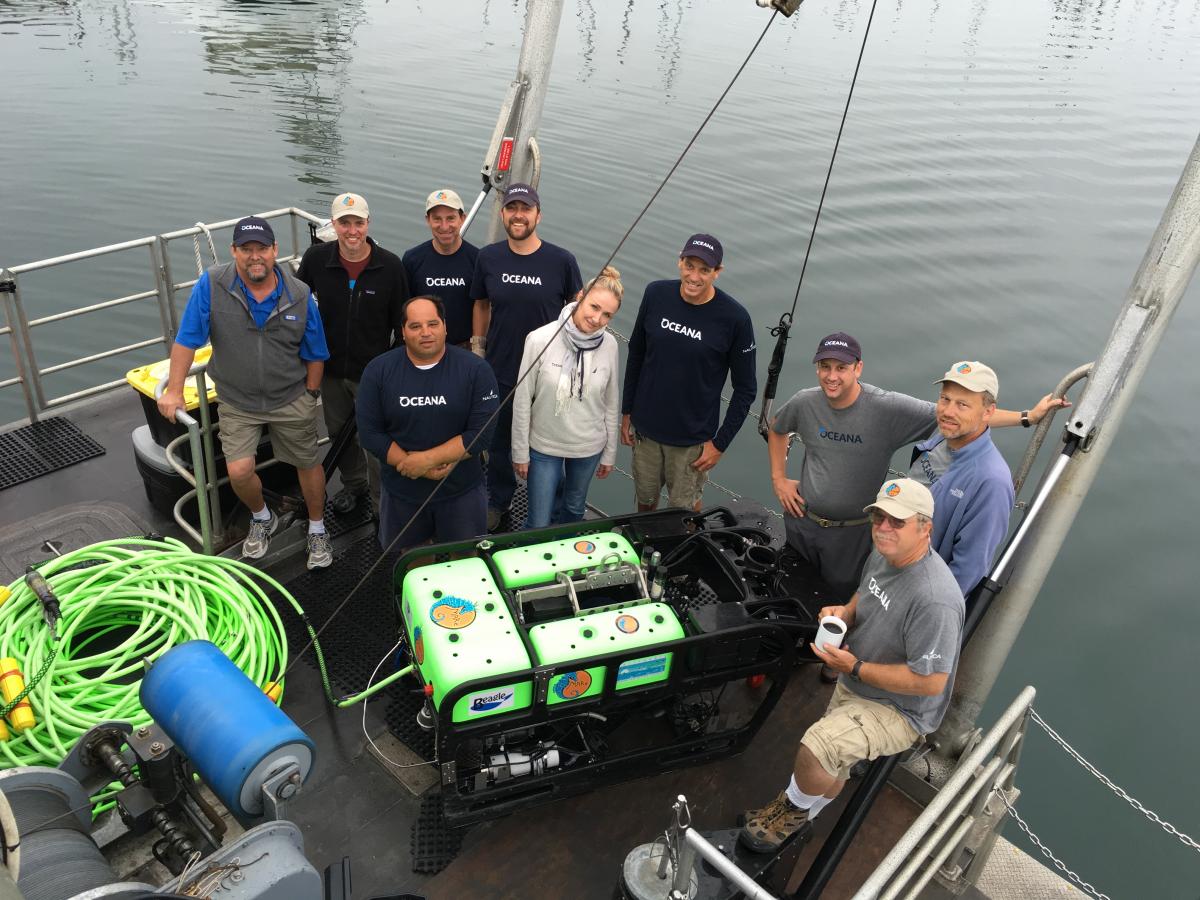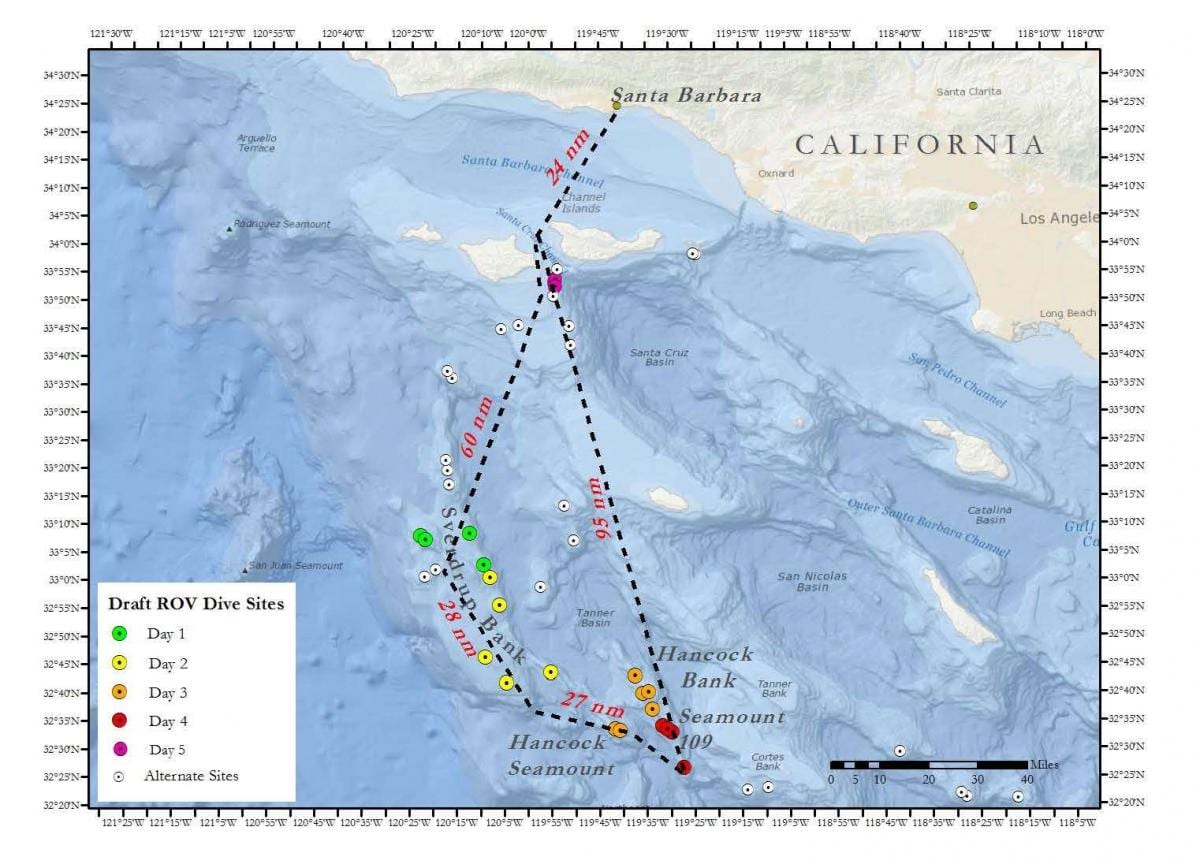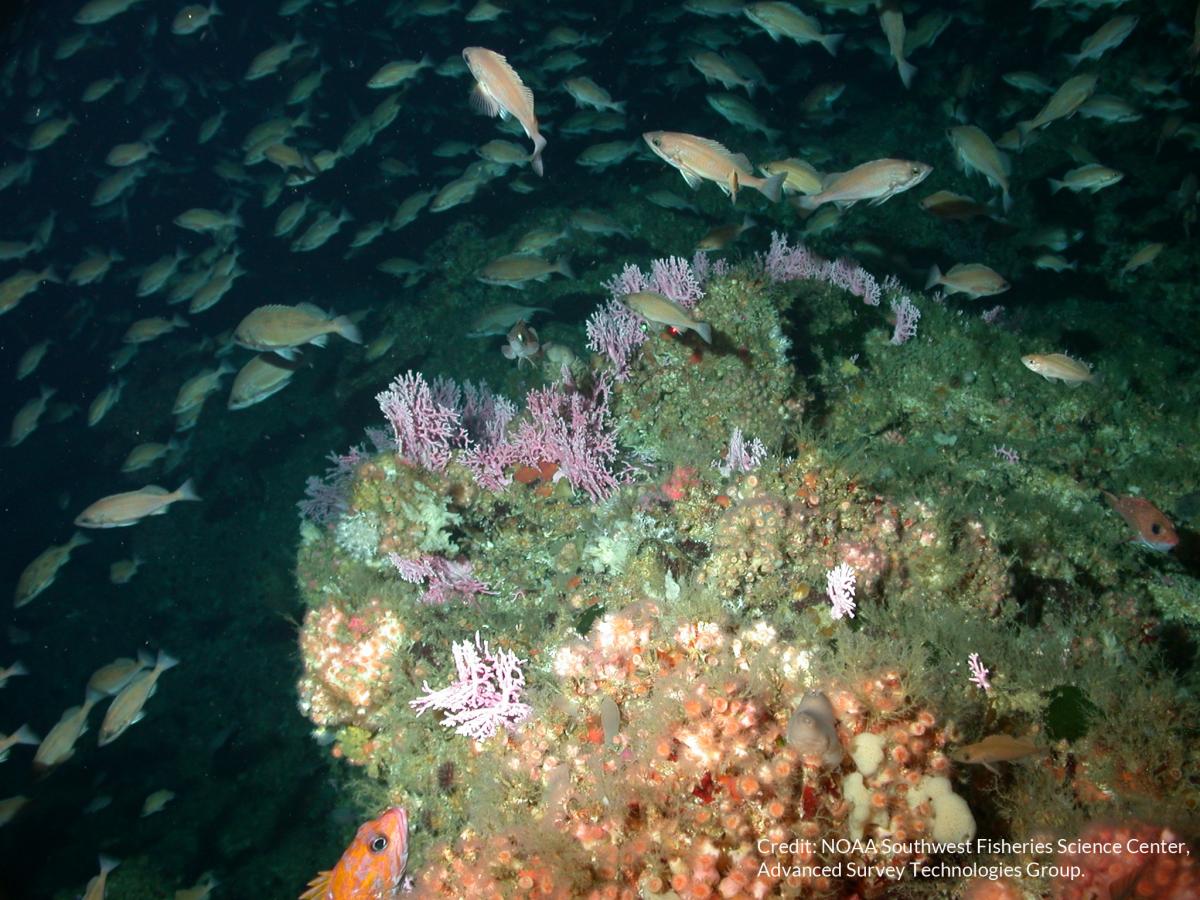August 8, 2016
A Journey into the Unknown

Yesterday, a team of Oceana scientists and global ocean explorer Alexandra Cousteau set off on an at-sea expedition just as the sun was rising over the Southern California coastline. Their mission: to document and better understand the ecologically important habitats that stretch across the expansive Southern California seafloor, up to 100 miles off the coast. Many of the places that Oceana and Alexandra plan to explore have never before been seen or captured on camera. What they’re embarking on this week is a journey into the unknown.
California has the third largest amount of coastline of the U.S. states. The marine waters off this long stretch of the West Coast are a truly unique place and host some of the most impressive animal migrations in the world. Sometimes referred to as the “Blue Serengeti” the California Current brings annual migrations of iconic animals like blue, gray and humpback whales, endangered Pacific leatherback sea turtles, dolphins, sharks, and sea birds through its nutrient-rich waters. These large, charismatic animals at the top of the aquatic food chain rely on a productive and healthy seafloor. Luckily, California’s cold coastal waters provide the perfect conditions for coral gardens, sponge colonies, and rocky reefs, which in turn act as the feeding, breeding, and nursery grounds for many fish and other small species on the seafloor. The productivity of the living seafloor supports a healthy ocean ecosystem and provides for commercial and recreational fishing, as long as we protect the most fragile and diverse seafloor hotspots that are most at risk from human disturbance.
Currently bottom trawling—the most destructive fishing practice to the seafloor off the U.S. West Coast—has not expanded into areas off Southern California. However, according to current rules bottom trawls can enter these areas at any time. Heavy trawl doors, sometimes 1,300 pounds in weight, drag across the bottom of the seafloor holding the fishing net open to catch rockfish, California halibut, Pacific cod and lingcod. In doing so, this gear can also rip up and destroy essential fish habitat such as hundred to thousand-year-old coral and sponge communities. Oceana seeks to prevent this from happening off Southern California. This area is largely unexplored, but some of the few areas that have been researched show abundant diversity on the seafloor. Better understanding these areas is vital in order to manage for conservation and for fishing opportunities.
In 2005, Oceana and our partners successfully advocated for the protection of more than 135,000 square miles of essential coral, sponge, and rocky reef habitats off the coasts of California, Oregon, and Washington from the effects of bottom trawling. In 2013, Oceana submitted a comprehensive conservation proposal to fishery managers to modify these existing conservation areas and to protect additional areas where new data shows hotspots of corals and sponges.

So yesterday we set off on a scientific expedition to collect information that will help these fishery managers make the right decision. We are planning to conduct over 20 dives in 5 days using a Remotely Operated Vehicle (ROV) that can dive down as deep as 2,000 feet to capture high-definition images and video footage of places never before seen. With this new evidence, Oceana will advocate to proactively protect 16,440 square miles of important seafloor habitat off Southern California from destructive bottom trawling. Check out our preliminary dive plan. Stay tuned this week, and follow our journey to see what we find.
You can also take action today and tell the Pacific Fishery Management Council that you support protecting our ocean’s most important and productive seafloor habitats.

MOST RECENT
September 3, 2025
Air Raid Panic to Informed Skies and Seas: The National Weather Service in a Nutshell
August 29, 2025
August 22, 2025
Corals, Community, and Celebration: Oceana Goes to Salmonfest!



